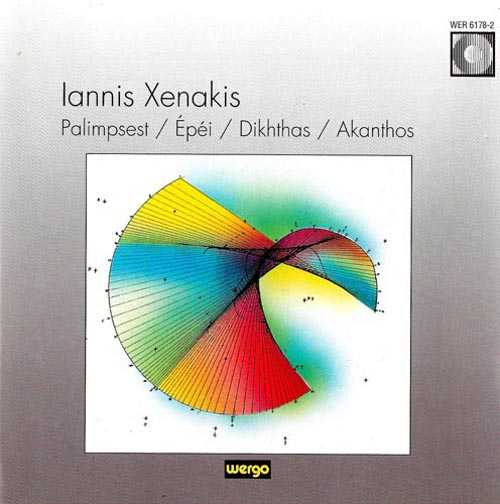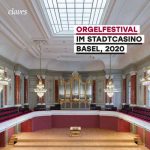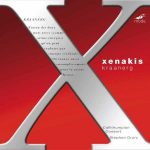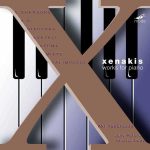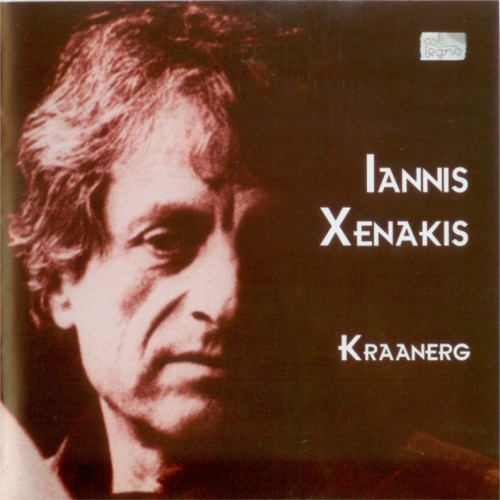
Composer: Iannis Xenakis
Orchestra: Sinfonieorchester Basel
Conductor: Alexander Winterson
Audio CD
SPARS Code:
Number of Discs: 1
Format: APE (image+cue)
Label: Col Legno
Size: 324 MB
Recovery: +3%
Scan: cover
This is an epic electro-acoustic work, one of Xenakis’s best, and a quintessential example of “stochastic music,” the term Xenakis used for his innovative compositional theory. Over 74 minutes, “Kraanerg” alternates between live orchestral sections and electronic tape sections — the tapes are electronically altered orchestral performances of the work from 1968-9 when it was composed. The music features rapid staccato outbursts from trumpets and trombones, woodwinds and strings, and glissandos — the sound associated with Xenakis ever since his revolutionary “Metastaseis”. The tape sections utilize various levels of sound alteration — some passages are slightly distorted, and others leave no trace of the original instruments. This results in a fascinating range of textures — the mysterious sheets of electronic sounds at times sound like the shimmering aurora borealis. The overall effect of this stochastic, electro-acoustic music, undergoing continuous transformation, is like witnessing the awe-inspiring organic processes of nature majestically unfold. The Discovery channel has recently taken to using time-lapse photography of clouds in motion in their productions, and Xenakis’s use of algorithms seems to capture that organic transformation, intensified by time-compression.
“Kraanerg” was originally commissioned as a ballet score, incredible though it seems, for the opening of the National Art Center in Ottawa, Canada in June, 1969. Xenakis took as his theme the youth rebellion that swept the globe in 1968 — the literal translation of “kraanerg” being youth-energy. Xenakis fought the fascists in Greece during World War II as part of the communist guerilla movement in his youth, and the ferocity of those events are imparted in all his music. Here is how Xenakis draws on his experience to describe his stochastic method:
“…the reports of dozens of machine guns and the whistle of bullets add their punctuations to this total disorder. The crowd is then rapidly dispersed, and after the sonic and visual hell follows a detonating calm, full of despair, dust and death. The statistical laws of these events, separated from their political or moral context, are the same as those of the cicadas or the rain. They are the laws of the passage from complete order to total disorder in a continuous or explosive manner. They are stochastic laws.” — “Formalized Music” (1955)
This recording of “Kraanerg,” from 2001, is of a performance by the Sinfonieorchester Basel, with Alexander Winterson conducting. Basel, Switzerland is apparently a thriving center of contemporary “classical” music. How does the new Col Legno compare to the 1996 Asphodel recording in NYC of the ST-X Ensemble, with Charles Bornstein conducting? They are both excellent — it seems to me, listening to them back to back, that the ST-X version is more vivid, while the new Basel Symphony version is perhaps richer. One clear advantage of the Asphodel recording (see my 6/15/01 review) is that it is broken into 41 separate tracks, while this new Col Legno disc is one unbroken 74-minute track. Xenakis did not write the piece in separate movements, but the alteration of live and taped sections makes it a simple matter to introduce breaks — quite convenenient if, as is all too likely, the listener is interrupted over the course of an hour and a quarter. So in that sense the Asphodel is preferable, but it seems that this new Col Legno is the only version currently available, and it is superb.
In closing, here’s what composer Roger Reynolds has said about the music of Xenakis: “To my ear, his music is radiant and lean, remarkably clear of traditional allegiances to harmonic substance and melodic gesture. His works are compelling examples of previously unknown event-worlds. One can objectify them by virtue of their image-making, formative strength. They stand not on arguments made but on materials revealed. They are above pleading.” — “Mind Models,” p. 186 (1975)
